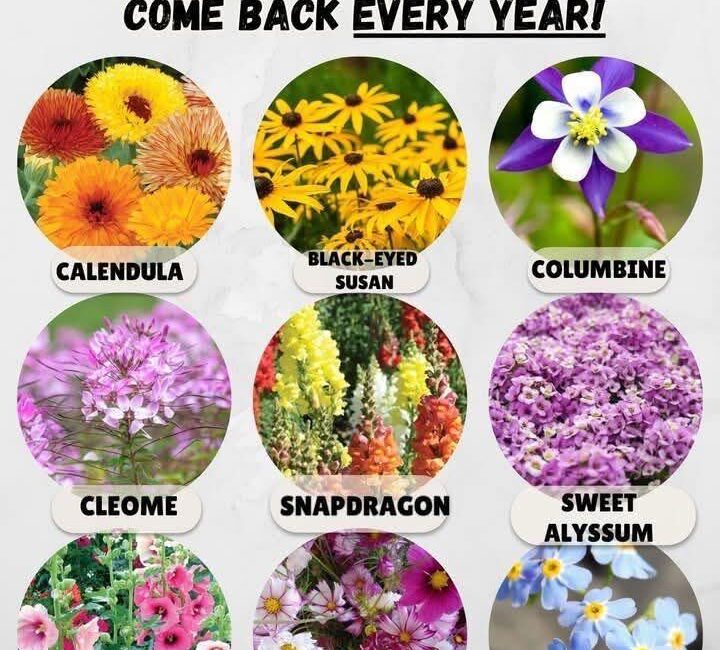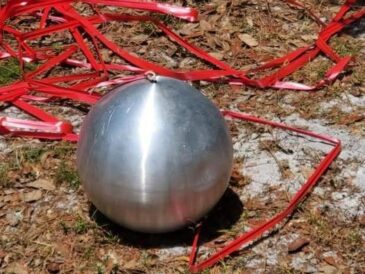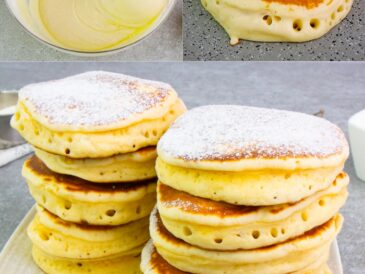Gardening is an art that blends aesthetics, culture, and ecology. When choosing plants for your garden, it’s important to consider several factors: appearance, growth, and the plant’s longevity. Certain plants, called perennials or biennials, have the remarkable ability to self-seed or re-grow year after year. These plants are ideal for gardeners who seek vibrant colors, pleasant fragrances, and biodiversity in their outdoor spaces. In this article, we will explore a series of plants that, once planted, will self-seed and faithfully return every year, bringing beauty and harmony to your garden.
1. Calendula: The Marigold – A Resilient and Flowering Beauty
Calendula, commonly known as marigold, is one of the most robust and popular plants in gardens. It is loved for its ability to self-seed each year, and its vibrant blooms add a splash of yellow or orange to beds, borders, and pots.
Origin and Characteristics:
Calendula is native to the Mediterranean regions and has adapted perfectly to temperate climates. This perennial, often grown as an annual, has strong resilience and self-seeds easily in well-drained soils. Its flowers, which range from bright yellow to deep orange, are not only beautiful but also offer medicinal properties, often used in teas, ointments, and skin treatments.
How It Self-Seeds:
The seeds of calendula naturally fall to the ground once the flowers fade. They easily germinate the following spring, creating new plants with minimal intervention. This makes it ideal for naturalistic gardens where nature is allowed to renew itself.
2. Black-Eyed Susan: Rudbeckia – A Wild and Persistent Beauty
Rudbeckia, or Black-eyed Susan, is a stunning perennial known for its bright yellow flowers with a distinct black center. This plant is a perfect choice for sunny gardens, where it can grow freely.
Origin and Characteristics:
Native to North America, Rudbeckia is extremely resilient and drought-tolerant, making it an excellent choice for gardens that require less water. Its long flowering period, from early summer to fall, makes it a favorite in the garden. It also attracts pollinators, such as bees and butterflies, contributing to the health of your garden’s ecosystem.
How It Self-Seeds:
The seeds of Rudbeckia naturally fall to the ground when ripe, and the plant self-seeds year after year, often with little care. In addition to its visual appeal, Rudbeckia is a tough plant that thrives in a variety of conditions while adding a wild beauty to any garden.
3. Columbine: Aquilegia – An Elegant and Unique Flower
Columbine, also known as Aquilegia, is a delicate yet hardy perennial appreciated for its distinct shape and exquisite flowers. The blooms range in color from blue to red, yellow, and white.
Origin and Characteristics:
Native to temperate regions of Asia, North America, and Europe, columbine prefers rich, humus-filled soil and partially shaded areas. Its flowers are not only beautiful but also aromatic, attracting pollinators like bees and hummingbirds.
How It Self-Seeds:
Columbine produces light seeds that are easily dispersed by the wind. They naturally germinate in the spring, ensuring that the plant comes back year after year, sometimes in unexpected spots. This plant’s ability to self-seed makes it ideal for low-maintenance gardens, where the natural cycle of growth is allowed to flourish.
4. Cleome: Spider Flower – An Exuberant and Perennial Plant
Cleome, often called spider flower due to the shape of its blooms, is a perennial plant native to the tropical Americas. It is highly appreciated for its unique appearance and exotic flowers.
Origin and Characteristics:
Cleome produces airy clusters of tall, spider-like flowers in shades of pink, white, or purple. This plant thrives in full sunlight and can tolerate slightly dry soil. Its height and striking flowers make it an excellent choice for adding texture and vertical interest to gardens.
How It Self-Seeds:
Cleome is a generous self-seeder, producing a wealth of seeds that naturally fall to the soil. They germinate in the following spring, ensuring the plant’s return every year. Its ability to self-propagate makes it perfect for gardeners who appreciate plants that grow with little effort.
5. Snapdragon: Antirrhinum – A Colorful and Tall Perennial
Snapdragon, also known as Antirrhinum, is a perennial plant popular in many gardens for its distinctive shape and vibrant flowers.
Origin and Characteristics:
Native to the Mediterranean region, snapdragons produce long stems with “snapdragon-like” flowers that come in various colors, including red, yellow, pink, and white. It thrives in well-drained soils and full sun, and its tall spikes create a dramatic effect in the garden. Snapdragons are also excellent for attracting pollinators such as bees and hummingbirds.
Click page 2 for more




